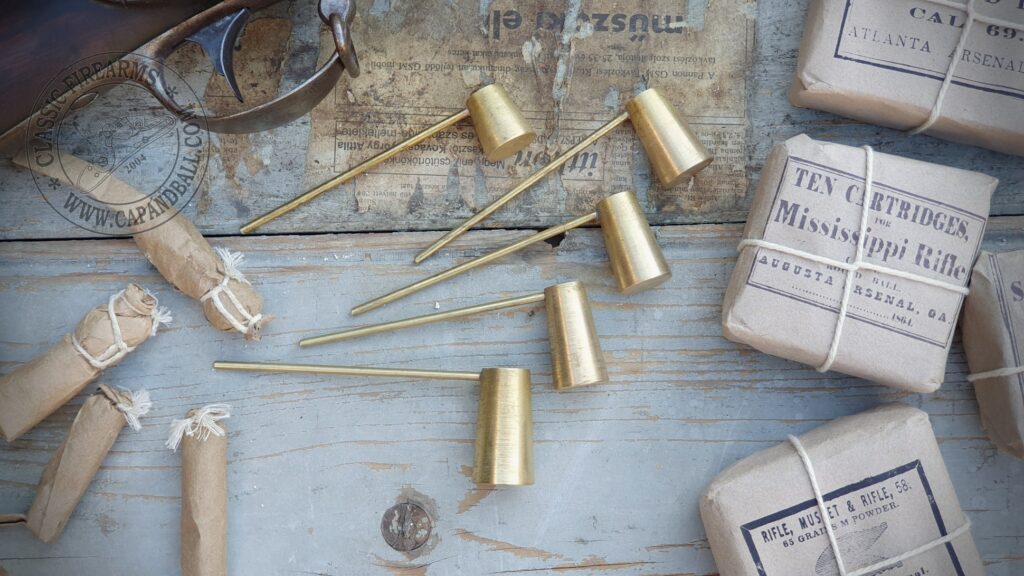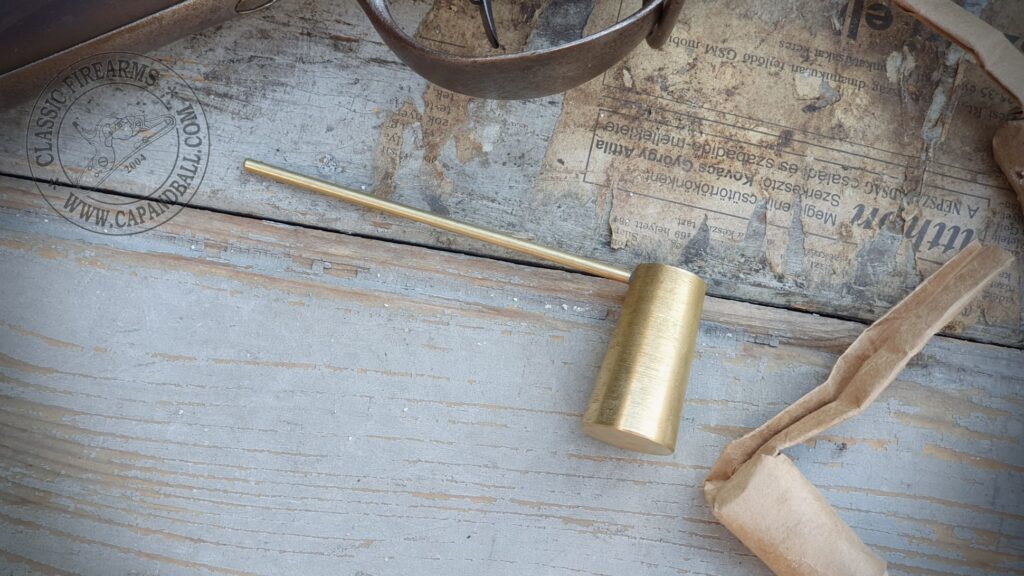Recreating the Civil War time military powder measures

The way we measure black powder is quite close to the original techniques used in the past. To be honest, we do not need the same kind of precision we practice while measuring smokeless powder for reloading modern cartridges. The reason is quite simple: we shoot heavy lead projectiles with relatively low velocities where one or two grain bullet or charge weight will not make any significant difference in impact points. There are two schools today for measuring powder: I am pretty sure that most of us measure by volume, but there are also some shooters who measure by weight on precision analogue or digital scales. In most cases I am happy with measuring by volume. Black powder particles are burning on their surface, meaning having equal number of particles in a certain charge is more important having the same weight each time. For a constant gas pressure, you need same burning surface. The only case when I also use a scale is when I am preparing for an international competition. At these occasions I still measure my charges by volume, but I also use a digital scale to control the equality of the charges. If I do this, I do not stop until I reach 0.1 grain accuracy. I know that this does not make a difference, but it is important for my sport shooter mind: when I am done with the shooting, I want to be sure I have to blame myself, and not the charge or any other external circumstances.
For measuring powder, I have been using powder ladles made from cartridge cases. They are easy to make and they will drop charges with 0,1 grain accuracy, if you always repeat the same method for filling the measure. I just love these ladles, but I always wanted to replicate the original military pieces as well, which are very hard to find now. Being a small tool, even if it was issued to arsenals in large numbers, they disappeared easily. The ones available today are mainly civilian items, and most are originating from the late 19th, early 20th century. This is why I decided to make authentic replicas.
We have well documented specifications for such tools in the Ordnance Manuals. The first manual to describe the powder measures for various arms is the Ordnance Manual of 1841. It holds information on five type of measures and the funnel to fill the paper tubes:
By the 1850s percussion arms took over the place of flintlock arms therefore new measures were designed, although the old ones also remained in service, and were continued to be used during the Civil war as well. The Ordnance manual of 1850 described only three types:
When the rifle musket entered service the old powder measures were still in use, but the new Ordnance Manual of 1861 described a new tool with the following specifications, but also mentioned the use of the old measures as an option if they dropped the right charges:
This powder measure with funnel attached is something I have never seen neither in books, nor on the web. (If you have info, please send it to me by email! Many thanks, Capandball). The old measures remained in service. A good proof is an illustration from Harpers Weekly, still showing the conical measures of the 1841 Ordnance Manual used in 1861.
The brass powder measures in the picture, produced by the Capandball Arsenal, replicate the five measures described in the OM 1841. These measures are conical with larger diameters at the bottom. They are easy to use, and they drop quite uniform charges. All are turned from brass, and the brass handle is soldered to the body. The powders of the 19th century differed in weight from today’s black powders, therefore there are differences in charges they drop. Even if the volume was the same, the weight can still differ for other reasons than the differences in powder manufacturing, as the weight is also depending on the water content. The dryer the powder is, the lighter it will be.
A comparison of my proper size reproductions and the information in the Ordnance Manual:
| Ordnance Manual 1841 | Swiss 1Fg | Swiss 3Fg | |
| Type 1, Musket | 130 | 140,3 | 144,4 |
| Type 2, Musketoon | 85 | 92,3 | 94,7 |
| Type 3, Rifle | 100 | 83,1 | 86,6 |
| Type 4, Carbine | 75 | 82,3 | 84,6 |
| Type 5, Pistol | 50 | 53,4 | 56,7 |
We started manufacturing these sets, and now they are available in our eBay store. If you are not familiar with eBay, just drop as an email, and we’ll be happy to ship a set to you.
They will be perfect companions, accessories for re-enacting, or any kind of historical shooting. They add just a little magic touch to the way we create our American Civil War time paper cartridges today.
Balázs Németh, 2021.






















